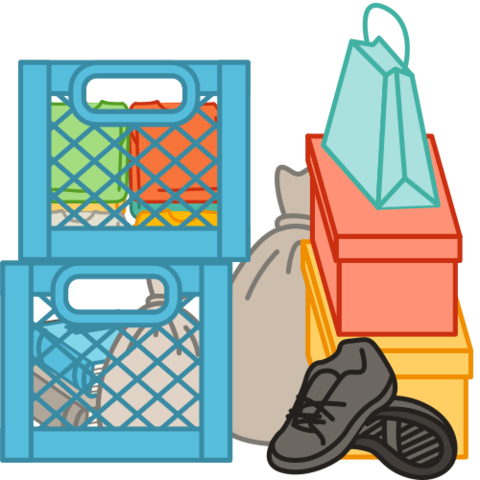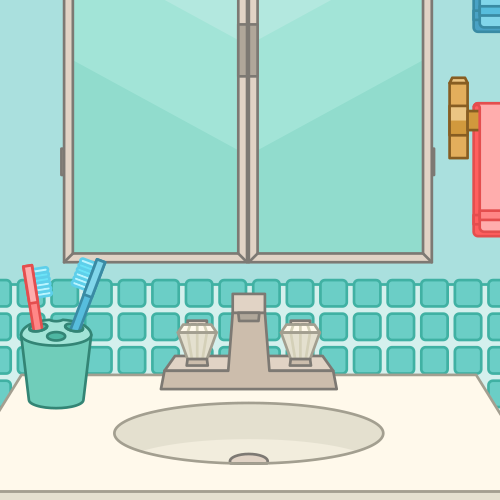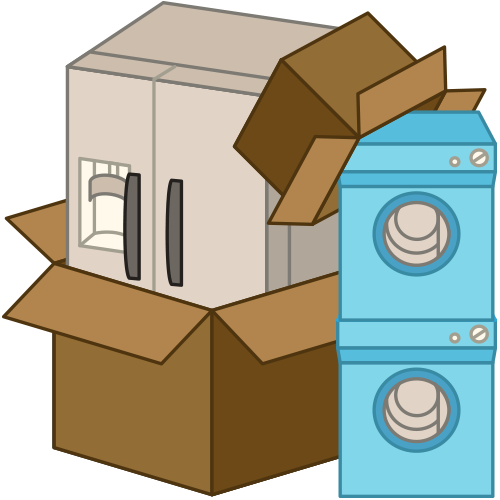 Moving to Atlanta? The first thing you should probably know about your soon-to-be home is that in just about any ranking of US cities with the most sprawl, Atlanta takes the top slot. That means that one of the top considerations when you’re looking for short-term housing (and long-term as well) is your commute. Luckily, here at Moveline, we’ve overseen our fair share of local and long-distance moves, and we’ve got tips for all sorts of places and living situations, including temporary housing in Atlanta.
Moving to Atlanta? The first thing you should probably know about your soon-to-be home is that in just about any ranking of US cities with the most sprawl, Atlanta takes the top slot. That means that one of the top considerations when you’re looking for short-term housing (and long-term as well) is your commute. Luckily, here at Moveline, we’ve overseen our fair share of local and long-distance moves, and we’ve got tips for all sorts of places and living situations, including temporary housing in Atlanta.
First up: a tip on getting from point A to point B. Roone Unger, a contractor and owner of Exovations, a home improvement company in Atlanta, knows the unofficial capital of the south well. “If you can cut down on your commute time,” he says, “you’ll be happier and have more time to explore beautiful Atlanta. Keep in mind there is one major Interstate that runs through the city. It seems that no matter what part of 85 you are on or at what time of day, there is always some sort of delay. If you are able to take public transportation, look into that. If you don’t have a car, look for a place near a MARTA (Metropolitan Atlanta Rapid Transit Authority) station; trains run through the city and there are buses that connect some suburbs to downtown.”
Get an overview of Atlanta neighborhoods
Before you begin your search for a place to stay, get familiar with Atlanta by checking out Curbed’s Atlanta page. Covering the city’s real estate market, it gives a feel for some of the city’s neighborhoods. A recently-posted, decidedly politically incorrect, annotated neighborhood map which originally appeared anonymously on Reddit gives a no-holds-barred glimpse at the city’s neighborhood stereotypes. For its part, Curbed warns that it’s guaranteed to offend just about everyone.
Two other, more tonally straightforward sites to help orient newcomers to Atlanta are Trover and CoEverywhere. Trover lets you see photos of what people who live in a particular neighborhood like best — galleries, food shops, parks, etc. CoEverywhere lets you draw a circle around the area you want to explore and connects you to its real-time social media activity, including tweets, facebook posts, photos and more.
Reach out to friends (and friends of friends)
Speaking of social networks, they’re a vital part of any relocation. Telling all your contacts that you’re moving to Atlanta and looking for short-term housing can often cut out a lot of extra work. If you’ve got serendipity on your side, your search might go as smoothly as Thomas Nitzsche’s: he relocated to Atlanta from St. Louis for a job in early 2014. After checking out three places he’d found on Craigslist.com that ultimately weren’t what he wanted, he took a lunch break. The person he had lunch with — someone he’d met through a social app — turned out to have a home with a detached furnished carriage house in the Virginia Highland neighborhood, and he’d just decided to rent out. “It’s one of the best areas of the city,” Nitzsche says. “A few weeks later, I moved into it.”
Use online short-term stay resources
If you come up empty from your word-of-mouth campaign, you can always lean on those two old standbys, Craigslist and airbnb. A recent Craigslist search came up with a share in a recently renovated 900-square-foot two-bedroom condo near Peachtree Center for $500 per month. On airbnb, a 925-square-foot one bedroom plus sunroom sublet furnished in mid-century modern style and located across the street from Georgia State runs $2137 per month as of this posting.
If you’re unable (or too creeped out) to check out listings for yourself, you can get the folks at golook.com to scope out possibilities for you. Services, including a full report, start at $59.
The national site sublet.com is also worth a look. Two recent Atlanta listings included a one-bedroom in midtown near Piedmont park for $1220 including utilities and a totally renovated two-bedroom house in Buckhead with a big backyard or $4200 a month.
Other good places to look: atlanta.apartmenthomeliving.com, ListLux and Uloop (which specializes in properties near colleges and universities). And for sublets available primarily to academics, take a look at Sabbatical Homes, a site founded in 2000 by Nadege Conger, a professor’s wife who now runs the growing operation with the help of a multi-national team.
Find a roommate
Need help finding a roommate? Three nationwide sites that can help are roomster.com, roommates.com and roomiematch.com, and Atlanta’s own Roommate Locator can too. ListLux and Uloop, listed above, also offer listings with roommates from time to time.
 Love is a many splendored thing… at least most of the time, right? When the time rolls around to start cohabitating, though, that’s when one of the many true challenges of a relationship can rear its ugly head, testing the mettle of even the schmoopiest of lovebirds. So, we’ve put together the ultimate guide for couples moving in together. It’s chock full of statistics, anecdotes, tips and advice. But for the “tl;dr” crowd, we’ve synthesized those points into a short blog post for your speed-reading pleasure. Here, a quick rundown of the dos and don’ts of moving for a relationship.
Love is a many splendored thing… at least most of the time, right? When the time rolls around to start cohabitating, though, that’s when one of the many true challenges of a relationship can rear its ugly head, testing the mettle of even the schmoopiest of lovebirds. So, we’ve put together the ultimate guide for couples moving in together. It’s chock full of statistics, anecdotes, tips and advice. But for the “tl;dr” crowd, we’ve synthesized those points into a short blog post for your speed-reading pleasure. Here, a quick rundown of the dos and don’ts of moving for a relationship.
Know thyself
Moving across town to share an apartment with your favorite person is a big enough step on its own, but if you’re making a long-distance move, it’s imperative to ask yourself what a full-fledged relocation will do to the aspects of your life outside of your relationship. Will it hurt your career? Make it tough to stay in touch with friends and family? Sever your ties to people, places and things that are important to you? If so, think long and hard before you make the leap. The Moveline team isn’t made of relationship experts, but moving is indeed our specialty, which means we’ve met lots of people under lots of stress. Make sure you ask yourself if your bond with your significant other is strong enough to withstand all of it. (And make sure you ask them, too.)
Divide and conquer
So you’re a traditional homebody with an antique leather couch and a couple thousand books, moving in with a globetrotting minimalist whose only earthly possessions are a laptop, a futon and a suitcase? This might call for a compromise or two, on everything from decorating your space to setting realistic expectations of what your life under the same roof will be like.
Yeah, yeah, we know opposites attract and love conquers all, but you can probably avoid a few epic fights just by being open about your desires and expectations before you ever pack a box. Figure out well in advance what earthly possessions are most important to each of you vs. what can be given away, repurposed into something else or sold on Craigslist, and talk openly about what you want life together to be like. Early mornings and cozy evenings in, or all-night parties and wild weekend roadtrips? Half the fun of moving in together is learning each other’s hidden quirks, but before the novelty wears off, figure out how to meet in the middle, give one another space and respect each other as individuals. That’s how the strongest relationships thrive.
Figure out those finances
It’s long been said that money is the leading cause of divorce, and probably often breakups too. So sit down with the object of your affection and don’t just figure out the monthly budget (i.e., Are you going 50/50 on rent? Who pays for toilet paper/coffee beans/Netflix? Whose name goes on the utilities bill?); ask those deep, sometimes uncomfortable questions about how each of you deals with your dollars. The Motley Fool offers a great, free exercise (requiring just an email sign-up) to help you clear the air with one another about your attitudes toward money and how you spend it. Conversations like these can help you better understand where your future challenges might lie and give you the tools you need to cut them off at the pass.
Most importantly, keep the lines of communication open about everything under the sun. Check out our guide for detailed advice on moving for love, and of course, enlist Moveline’s help when it comes time to hire a mover and get going. We’ll help you compare movers, hire the right one, and save money, time and stress along the way. Because who wants to waste extra energy on all that stuff when there’s a his-and-hers (or his-and-his, or hers-and-hers) nest out there, just waiting to be yours together?
 In such an age of excess, the environmentally conscious among us can get a little nervous when it comes to outfitting a new home with all-new furniture and decorations to match. That’s why it’s such good news that there are so many resources online that champion creative reuse projects, showing us ingenious ways to transform one thing into another.
In such an age of excess, the environmentally conscious among us can get a little nervous when it comes to outfitting a new home with all-new furniture and decorations to match. That’s why it’s such good news that there are so many resources online that champion creative reuse projects, showing us ingenious ways to transform one thing into another.
Sure, entering into a DIY project can mean setting oneself up for failure. (To wit: see comic geniuses Katy+Katie, the YouTube purveyors of, well, Pinterest fails, basically. Every few months, they take some internet advice and apply it to real life, usually with tragicomic, i.e. classic, results.) But it can also mean making something cool out of something unexpected, creating a conversation piece, learning something new, and maybe even reducing your impact along the way.
So here, the Moveline team has put together a handful of recommendations for instruction on repurposing common items into awesome home goods and furnishings.
Instructables
Perhaps the single greatest resource online for big, bold DIY projects (and little ones, too), Instructables gives step-by-step guidance on everything from cool papercraft decor to a pinball machine desk. They’re viewed as such experts in the field of creative reuse that they’ve partnered with the likes of Radio Shack and Home Depot. So, you could easily call this your singular one-stop-shop for ideas and how-tos when it comes to sprucing up your space.
BoredPanda
Few folks are bigger experts at killing time (and, obviously, boredom) than the ones behind BoredPanda.com. So it makes sense that they’d have rounded up some of the coolest, most inventive upcycling projects in existence and shared them on the web. Take a gander here at everything from a shelving system made of folding chairs to a lamp made of plastic spoons.
Apartment Therapy
Ever a treasure trove of ideas for inspired small-space and apartment living, Apartment Therapy occasionally does roundups of all its articles covering a particular topic, like this one linking to 49 posts on creative reuse projects. Lots of inspiration can be found in the site’s green living section as well.
Brit.co
For super-simple decorative elements, there’s no better place to go than Brit.co. This UT Austin alumna and former Google employee is setting herself up to be the next Martha Stewart, only with easily accessible materials and a far funkier, millennial-friendly aesthetic this time around. A gold-dipped lightbulb chandelier, copper-piped side table or pimped-out ribbon hammock? All can be yours with a few raw materials and a little elbow grease.
Sure, we mentioned Pinterest fails above, but life is meant to be lived, right? DIY furniture projects aren’t for the weak of spirit, so do a little research around your object of choice and combine tips from different sites if you have to, but know that a little ingenuity and perseverance can go a long way. You might even get a sweet coffee table out of the deal.
And when it comes to pulling together some cash for those finishing touches, like paint, glue and hardware? If you’re moving into a new space, Moveline can’t help you make furniture for it, but we can help you save money by comparing movers on your behalf, helping you select the right one and guaranteeing your price with zero surprises at the other end of the move. You might be on your own when it comes to building that bookshelf made of pipes, but you’re not alone in moving from one home to another. So, let us help. It’s why we’re here.
 Here at Moveline, we get a lot of questions about a lot of things when it comes from moving from one place to another. A few include, “What’s a delivery spread?” “It’s cheaper to move myself instead of hire someone, right?” and “What in the world is valuation?” Here, we’ll tackle that last one to help you wade through the maze of moving industry terminology.
Here at Moveline, we get a lot of questions about a lot of things when it comes from moving from one place to another. A few include, “What’s a delivery spread?” “It’s cheaper to move myself instead of hire someone, right?” and “What in the world is valuation?” Here, we’ll tackle that last one to help you wade through the maze of moving industry terminology.
So, what is valuation? While it can feel confusing and complicated, it’s a fairly simple concept at heart. Let’s break it down.
Valuation = protection
The crew up on Capitol Hill requires that all Household Goods moves (that is, any move of household stuff, handled by a business) have a declared value attached to them. Now, declared value isn’t necessarily what these items are actually worth if they were sold. Some items would be tough to price accurately, and others have non-monetary value (heirlooms, for example). So the easier way to think about valuation or declared value is to think of it as a level of insurance or protection. If damage to the goods occurs, how much should the owners be reimbursed?
Because the value of many of our things is subjective, this declared valuation must be set prior to the move. After all, nobody wants to argue whether that busted lamp was “old” or “vintage” after the fact. So how do we develop an agreed-to declared value for an entire shipment? We’re glad you asked.
Released Value: $0.60 per pound
All shipments are required to be covered at a rate called “Released Value,” at no additional cost to you. That sounds good, except that this option gives new meaning to “minimum coverage.” Paying at a flat-rate of just $0.60 per pound, per item, if something breaks (unless it’s a cinder block) you’re not likely to get enough back to replace it. That three-pound, framed, limited-edition, signed print that got crushed? Here’s $1.80. That fifty-pound vintage guitar amplifier? If you can replace it for $30, you’re all set. What about the beautiful 200-pound leather couch you just bought for $1600? Under Released Value, you get a whopping $120. To us, that’s not sufficient.
Full Value Protection
This is exactly what you think it is: full-value coverage that costs more, but actually gives you a fair level of reimbursement should something happen to your things during shipping.
Moveline currently offers three options for Full Value Protection, based on the deductible amount–$250, $500, and $1000. In each plan, you get full replacement value of your things minus the selected deductible. So looking at that 200-pound leather couch again, that’s $1600 minus the deductible. Way better than $0.60 per pound.
It’s your choice (but it’s an easy one)
Obviously, since we work with only the best moving companies in the industry, every attempt is made to deliver your things safe and sound to your new home. But in reality, from time to time, life happens and damage or loss occurs.
Nobody likes it (least of all us), and that’s why we highly…HIGHLY recommend Full Value Protection for your move. In fact, for full-service moves, we include it by default in our pricing. You can choose to remove it, accepting only the free released value coverage, but unless you just enjoy taking unnecessary risks with your things, we strongly recommend against doing that.
Ultimately, it’s your property. And it’s your choice as to how to protect it, and at what level. If you have any questions, we’ll be happy to walk you through your options and help you make the best choice for you and your budget. Bottom line: if you’re planning a move, let Moveline help. It’s exactly what we’re here for.
 Here at Moveline, we take our customers’ needs seriously. It’s important to us to provide top-notch, innovative services that make people’s lives easier, particularly in the middle of a stressful life event like a move. But the FCC’s current proposed rules regarding net neutrality (or rather, what would ultimately be a lack thereof) is causing a great deal of concern among people-oriented brands like ours, and for good reason. So, we join our fellow “little engines that could” at companies like Etsy, Kickstarter, Netflix and Uber in raising our voices on our customers’ behalf.
Here at Moveline, we take our customers’ needs seriously. It’s important to us to provide top-notch, innovative services that make people’s lives easier, particularly in the middle of a stressful life event like a move. But the FCC’s current proposed rules regarding net neutrality (or rather, what would ultimately be a lack thereof) is causing a great deal of concern among people-oriented brands like ours, and for good reason. So, we join our fellow “little engines that could” at companies like Etsy, Kickstarter, Netflix and Uber in raising our voices on our customers’ behalf.
Here’s a copy of the letter our CEO and co-founder, Fred Cook, sent to FCC Chairman Wheeler this week. We urge you to take action, too, and let your voice be heard alongside those who stand against monopolies and controlled markets in a realm that should be open and free. Let’s keep the internet fully accessible for everyone, and keep the moving industry — and other industries, too — open to competition and improvement, just like it should be.
Dear Chairman Wheeler,
I’m the co-founder and CEO of Moveline, a Las Vegas-based company transforming the moving industry. For people who are moving, instead of having multiple moving company salespeople come out to their homes to do a walk-through, our Vegas-based team does a live video chat (such as Facetime, Skype, or Google Hangout) with a customer, and we give them a range of options for their move. We’re just over 2 years old, and are about to cross the 100-person mark. At the rate we’re growing, we expect to have created over 750+ new jobs in our first 5 years in operation.
I’m writing to impress upon you that net neutrality isn’t merely an issue in the content market; it’s an issue that increasingly will have an impact on all types of commerce.
Doing a live video chat requires significant bandwidth, comparable to watching streaming video online. Lack of net neutrality represents the potential for both a direct and indirect threat to our business. The indirect threat is a change in the live video chat market. Not all of our customers have the capability to do Facetime, but nearly everyone in America now has the ability to do some kind of live video chat. If through the cable company monopoly, this narrows to only a couple of protocols, the potential market for our product could be narrowed significantly.
The potential for a direct threat to our business is that a competitive service, or much more dangerously, one of the billion-dollar legacy businesses in the moving industry, decides they would like us to pay a toll to be able to video chat with customers. Without net neutrality, they could easily work with a cable company to either drain our resources or limit our ability to connect directly with customers, or to launch a competitive service and give it priority.
We receive feedback from our customers on a daily basis about how easy and convenient video chat is compared to having a salesperson come over to their home. If we weren’t able to offer this service, we would be denying the consuming public a better product and service than is currently otherwise available in our industry.
While Moveline is one of the first services to use live video chat to do business directly with consumers, we are seeing more businesses like ours popping up in other industries. In the near future, for any service which would have previously required someone to come to a business or residence and perform a physical inspection before work can be performed, a video chat company will exist to replace that part of the process, creating efficiency in the market and giving more choice to consumers.
Net neutrality and an open internet will ensure fair competition for services like ours across industries.
Thanks,Fred
If you’d like to take part in maintaining net neutrality and keeping the internet equally accessible to everyone, reach out to the FCC here and let them know how you feel.
 When you have a home, whether big or small, new or old, there’s one universal truth: you have stuff. And somehow, that stuff seems to magically multiply over time. But have no fear: with a little bit of imagination and ingenuity, you can clear out the clutter without clearing out your wallet. Better yet, with the creative storage ideas below, you can even add a bit of style to your home at the same time. So, enjoy these clever stuff-storing ideas from the Moveline team.
When you have a home, whether big or small, new or old, there’s one universal truth: you have stuff. And somehow, that stuff seems to magically multiply over time. But have no fear: with a little bit of imagination and ingenuity, you can clear out the clutter without clearing out your wallet. Better yet, with the creative storage ideas below, you can even add a bit of style to your home at the same time. So, enjoy these clever stuff-storing ideas from the Moveline team.
Organize, organize, organize
It’s amazing how simply putting similar things together can help the whole house feel less cluttered. Retailers like IKEA, The Container Store, Crate & Barrel, and even home improvement stores offer lots of great boxes, bags, containers, closet systems and shelving that can help. Of course, getting rid of things you never (or rarely) use anymore is a great first step.
Put unused space to work
Unless you’re fortunate to have a home designed with intelligent storage in mind, you’ve probably got a lot of unused space. An open wall can be a great place to add simple, cost-effective built-in bookcases. Have space under your staircase? Turn it into shelves, or a small closet. Cloth drawers can slide under beds. Look up! If you have high ceilings, you can hang a bicycle with a couple of hooks and some rope. Or use a wall mount if your room is more vertically-challenged.
Exercise your inner handyman
Pre-made furniture and storage is great, but may not always be the best fit for your specific need. If you have basic skills, there are thousands of resources online that offer free, simple DIY plans for all kinds of storage. For example, with a little wood and wire, you can make a great magazine rack. Ana White offers a huge range of furniture and storage plans that range from beginner to advanced. The DIY Network and Pinterest offer lots of ideas and plans as well.
Reinvent the ordinary
Repurposing existing items is a great way to save money on materials while you create new storage. The key is to look at common items from a different point of view. Often, just by adding a piece of rope, some fabric, a piece of wood or a magnetic strip, you can transform an everyday object into something new. A quick walk through the aisles of a craft store might provide just the inspiration you need.
A standard ladder can become a great bookshelf. Or a shoe rack. Or a pot rack. Or just about anything else you or someone else can dream up. Ice cube trays make great small-item organizers for your desk, craft room, or garage. A magnetic knife strip can keep your kids’ toy cars off the floor. Bottom line: use your imagination rather than your pocketbook to create new storage options.
Doesn’t a nice, organized home just feel better? We certainly think so. Plus, if you ever decide it’s time to think about moving to a new home, you’ll be that much closer to being organized and ready to pack. Of course, if that day comes, Moveline can help you make all the right decisions and save you money along the way, too.
 Backyards. For some of us, they hold endless possibilities, and for some of us, they just mean extra work. With some effort, you can make the most of a new backyard by transforming that little slice of earth into the private oasis you’ve always dreamed of, or at the very least, a low-maintenance area that isn’t a total eyesore. Either way, Moveline’s here with a roundup of tips and tricks to help you out. Whether you’re looking for a quick spruce-up or a total overhaul, check out these smart backyard ideas:
Backyards. For some of us, they hold endless possibilities, and for some of us, they just mean extra work. With some effort, you can make the most of a new backyard by transforming that little slice of earth into the private oasis you’ve always dreamed of, or at the very least, a low-maintenance area that isn’t a total eyesore. Either way, Moveline’s here with a roundup of tips and tricks to help you out. Whether you’re looking for a quick spruce-up or a total overhaul, check out these smart backyard ideas:
Plant some flowers
Just because you might not have the greenest thumb of all doesn’t mean you have to sacrifice awesomeness. If you’re trying to go the minimalist route in terms of effort, give a blooming lawn a whirl. Gardenista offers grass replacement ideas including Fleur de Lawn (a product of Oregon State), a mix that produces low-growing perennial flowers that change with the seasons. Some well-placed flower mix, meandering pathways, and voila! You’ve got yourself one beautiful, low-maintenance cottage enclave for a backyard.
Attract some birds
Another nifty idea for your new outside abode is turning it into a bird watcher’s paradise. Even if you’re not a bird enthusiast (perhaps you simply enjoy being close to nature and hearing soothing chirps in the morning), you can easily attract all kinds of wild birds right to your backyard by providing these four basics:
- Food. More diverse food means more diverse birds. You can provide food either naturally through particular flora or through bird feeders. Seeds, nuts, and fruit are a good place to start.
- Water. Flowing water is the way to go since birds can hear it from a distance. Just make sure to steer clear of any treatment chemicals, which can harm the little critters.
- Shelter. Birds won’t hang out where they don’t feel safe. Shrubs, trees, and perches for scanning the area are essential, especially near feeding spots.
- Nesting sites. If you want your feathered guests to become permanent ones, offer them a good spot to set up shop. Shrubs and trees are great, but good old fashioned boxes and birdhouses will do the trick too.
Read more on hosting birds in your backyard here.
Grow some veggies
A backyard vegetable garden lets you get closer to your food, and maintaining it offers a communal bonding experience for you and those you live with — plus you literally get to enjoy the fruits (and by fruits, we mean vegetables) of your labor. Don’t worry if your soil isn’t ideal — raised garden beds are a great solution. Check out Apartment Therapy’s guide to beginning a garden and start dreaming of all the delicious veggies you’ll have.
Save some dough
Whether you’re trying to minimize the damage to your wallet or you just have a penchant for crafting, these DIY ideas are sure to delight. They offer instructions on how to:
- turn an old chair into a one-of-a-kind yard swing
- make a windchime out of old keys
- add marbles to fence posts for some extra glimmer
- turn old wine bottles into homemade tiki torches that repel bugs to boot
From backyard inspiration to inside info on short sales and foreclosures, Moveline’s got your back. We take a video of your stuff at your convenience and get you guaranteed prices for your move. The coolest part: we stick with you (and fight for you!) the whole way through to make sure your move is nothing less than delightful. Get started with by giving us a call or visiting our site!
 While a lot of things that factor into your home’s value (like square footage and school district) are largely out of your control, upgrades are not one of them. Oddly enough, not all upgrades are created equal— some will add value to your home while others can detract from it. The Moveline team is here to give you the skinny on what’s almost unanimously accepted as good (and not-so-good) across the board when it comes to home renovations and their effect on selling price.
While a lot of things that factor into your home’s value (like square footage and school district) are largely out of your control, upgrades are not one of them. Oddly enough, not all upgrades are created equal— some will add value to your home while others can detract from it. The Moveline team is here to give you the skinny on what’s almost unanimously accepted as good (and not-so-good) across the board when it comes to home renovations and their effect on selling price.
Home upgrades that add value
1. Consider the kitchen.Kitchens are a critical consideration for homebuyers across the board. People often look for lots of space to both cook and to store things like food, utensils, and small appliances.
2. Matching appliances.Homebuyers will look for up-to-date and matching large appliances. If replacing them in order to get a matching set isn’t in the cards, consider just replacing the doors. (Moving the old ones out? Check out our tips for moving appliances.)
3. Baller bathrooms.Bathrooms are a close second to kitchens on the list of important upgrades. Luckily, they can easily be updated on the cheap. Simple things like a new toilet seat, a re-grouting of the tub or shower, and a matching color scheme will go a long way.
4. Storage space.A lack of storage space is often a huge detractor from home value — add as much of it as you can. If you find yourself with limited options or ideas, we’ve got tips for maximizing small space, or you can call on places like California Closets for all kinds of solutions.
Home upgrades that subtract value
1. Swimming pools.A house with a pool is a dream for some, but equals maintenance and expenses to others. If you’re considering investing in a pool to increase the value of your home, this is a good item to pass on (and it’s a relief to your wallet, too).
2. Inconsistent quality.It’s ok to have a slightly nicer kitchen than garage, of course, but glaring inconsistency actually hurts the overall value by making the less updated spaces look worse in contrast. The rule of thumb is to keep your home’s quality within the top 25% of the homes in your area.
3. Universal carpeting.Carpet stretching from wall to wall isn’t ideal, but if that’s your situation, don’t worry— replacing isn’t necessarily the way to go. Consider removing it and updating the hardwood floors below or removing just a portion of it, possibly near the door or entryway, and replacing it with wood or tile.
4. Elaborate landscaping.Aim for well-maintained rather than meticulous to avoid a decrease in curb appeal. Let the landscaping compliment your home, not overpower it. Much like swimming pools, to some an overdone lawn says maintenance work — not extra value.
From upgrade advice to tips on coping with leaving a home you’ve lived in for decades, Moveline’s team of industry experts has got your back. We’re customer service fanatics dedicated to making your move as delightful as possible. You’ll get solid advice and guaranteed quotes. Learn more about how Moveline can help you get a move on here.
 Scheming how you’re going to shuffle appliances around for your upcoming renovations without scuffing the floors? Maybe you’re wondering how to best pack your appliances, big and small, for your upcoming move. Either way, whether you’re moving appliances around the house or across the state, Moveline’s rounded up the best tips from our in-house experts to keep everything intact.
Scheming how you’re going to shuffle appliances around for your upcoming renovations without scuffing the floors? Maybe you’re wondering how to best pack your appliances, big and small, for your upcoming move. Either way, whether you’re moving appliances around the house or across the state, Moveline’s rounded up the best tips from our in-house experts to keep everything intact.
An ounce of prevention…
Small appliances need just a bit of extra TLC during the moving process to make sure they end up A-OK on unpacking day.
- Make sure the appliance is completely clean and dry to avoid mold or mildew.
- If there are removable parts (like a glass tray inside a microwave), take them out and pack them separately. (Pro tip: attach a note with re-assembly instructions to each appliance as you pack it.)
- Tape all electrical cords to each appliance.
- Be sure to choose the right box and fill all empty spaces with packing paper, packing peanuts, or other small, non-breakable items.
Appliance moving prep
Erik Christensen, one of Moveline’s many resident move experts, has a few pro tips for moving large appliances that will make the process as easy as pie:
1. Measure, measure, measure. Otherwise you won’t know if your doors need to come off their hinges until it’s too late. Don’t forget to include the handle!
2. Rent an appliance dolly. They’re specially designed to withstand the pressure of appliances and have soft wheels that won’t damage your floors.
3. Disconnect electricity and gas. In some places, it’s illegal for you to disconnect your own gas, so check with your gas company as regulations vary by state.
4. Disconnect water. Remove the hose from the wall and drain all water out of the hose, as well as any that may be pooled in the bottom of an appliance below the hose. This is important to know: movers are not insured to cover anything related to water damage. (If you want third party coverage, Moveline is happy to set it up for you!)
5. Thoroughly clean and dry everything. And keep all doors slightly open during transport, especially if items are going into storage. Nobody likes a weird-smelling, moldy fridge.
6. Secure loose or movable parts. Items like front-load washers can easily be damaged in a move if the drum isn’t properly secured to the frame. Shipping bolts come with appliances for this purpose, but if yours got lost in one of those seemingly bottomless junk drawers, get in touch with the manufacturer.
7. Protect those floors.Make sure the floor is clean (less friction, less scratching), avoid pivoting the appliance as much as possible (it unnecessarily grinds the feet into the floor), and use plastic furniture sliders under the feet of the appliance (thick carpet scraps work, too).
From handling appliances to moving with a pet and even making moving more fun, Moveline’s got your back. Check us out online or give us a call and get started today — we make moving as delightful as a freshly-laundered set of sheets. Well, almost, anyway.
 Moving is a big deal. From frying pans to family heirlooms, it’s a little scary to think about the opportunity for damage between packing, unloading, and everything in between. But never fear: Moveline is here to offer some tips on how to avoid damage in the first place and what to do if the inevitable occurs. Read on.
Moving is a big deal. From frying pans to family heirlooms, it’s a little scary to think about the opportunity for damage between packing, unloading, and everything in between. But never fear: Moveline is here to offer some tips on how to avoid damage in the first place and what to do if the inevitable occurs. Read on.
Positively proactive
The best thing you can do about damage is, pretty simply, avoid it. One way is insurance — it seems obvious, but make sure the policy you choose fully covers the actual cost of your stuff. If you go sans insurance, proactivity is your mantra. Before moving day, get a good handle on the condition of your stuff and make sure it’s packed properly. DIY packing is one option, but you might want to consider leaving it to the professionals, especially your high value (monetary or sentimental) items.
When moving day arrives, there’s a lot going on and it’s often emotional, but it’s important to remain calm and cognizant. Make sure your stuff and its current condition is accurately noted on the origin inventory sheet, and double-check these items on it:
- List any extra value items (at or over $100/lb) and their conditions on a separate high value inventory sheet
- Plug in all electronics and note their current working condition
- Double-check before you sign (this list is what everything is checked against on the other end)
If there’s anything on the sheet that you don’t understand, just ask. Movers will often use industry abbreviations to indicate the condition of items. A few notable extras are:* CH: Chipped* BR: Broken* CU: Contents Unknown* PBO: Packed By Owner
Pro tip: be a gracious host or hostess to your movers. Let them know where the restroom is, offer water, and consider treating them to lunch — even something as simple as pizza, burgers or subs. Get on their good side and they’ll probably be open to doing a quick walk-through with you for free to note a few things that need a little extra TLC.
Damage control
If damage does happen, all is not lost. Make sure all damage is noted on the destination inventory sheet and consider taking some quick photos on your phone with a timestamp — remember, documentation is your friend if you decide to file a claim.
Claims go two ways: if you got insurance, you’ll take it up with them. The experience will be a lot like filing a car insurance claim. If you move is uninsured, you’ll take it up with the moving company directly. This is slightly more difficult because you’ll have to prove something like negligence on the part of the movers, drivers, etc. if you want to get them to cover anything over the standard. As hard as it can be, if you’re in a claims process, fight the desire to get your stuff fixed in the interim.
If the damage is more on the minimal side and doesn’t really warrant the time and stress of a claims process, you can always get crafty with handy DIY tricks like Tibetan Almond Sticks and these furniture restoration tips. A little elbow grease can go a long way.
Still nervous about your move going smoothly? From pre-move questions to insurance, drop-off, and everything in between, Moveline’s there for you. We’ll put in in contact with a professional mover to make sure your move is nothing but smooth sailing from beginning to end. Check out our website or give us a call and get moving on your move today.